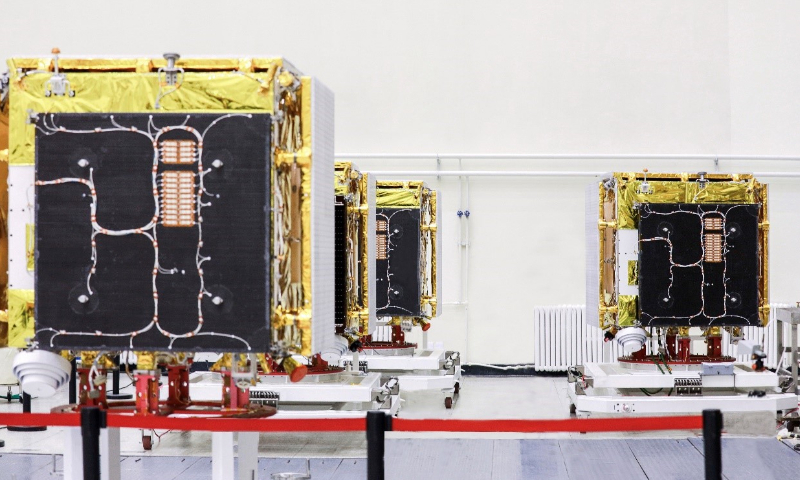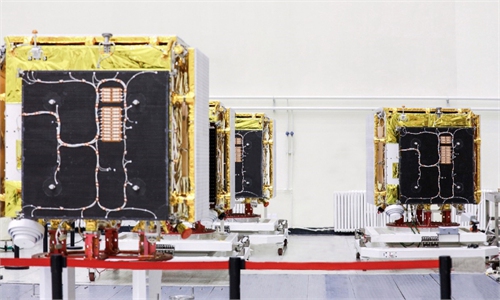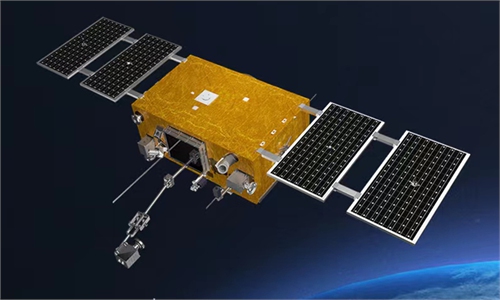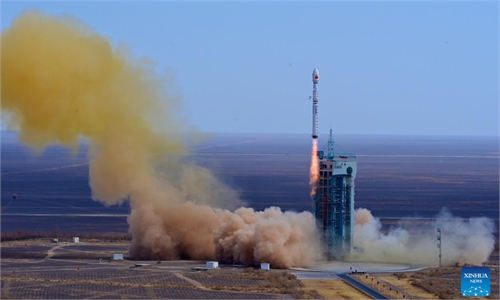
The four interferometric synthetic aperture radar (InSAR) satellites developed by GalaxySpace Photo: Courtesy of GalaxySpace
China successfully launched four interferometric synthetic aperture radar (InSAR) satellites developed by Chinese private satellite developer GalaxySpace using the CZ-2D rocket at the Taiyuan Satellite Launch Center in North China's Shanxi Province on Thursday, forming the first wheel-pattern satellite formation in the world, GalaxySpace told the Global Times on Thursday.
The four satellites - composed of a master satellite and three assistant satellites - are the world's first X-band InSAR earth imaging system in a four-satellite formation, said the company. The master satellite weighs about 320 kilograms (kg) and each assistant satellite weighs about 270 kg.
These satellites will constitute the first wheel-pattern satellite formation in the world, with the master satellite in the center and the three assistant satellites evenly distributed on the "hub" around it.
Compared with traditional interferometric satellite systems, the wheel-pattern formation has the advantages of relatively stable formation configuration, multiple interference baselines and high mapping efficiency.
The satellites are competent in mapping global non-polar regions at a scale of 1:50,000, which can achieve the high-precision mapping of global continents in a rapid and efficient manner.
The satellites will be a powerful tool for early identification of major geological hazards in complex areas due to their millimeter-level deformation monitoring capability, which can provide data support for exploration and the prevention of land subsidence, collapse, landslides and other disasters.
GalaxySpace has greatly improved the development efficiency for small-scale development of civil SAR satellites through digital simulation, automated testing and process optimization at the stages of satellite scheme design, entire satellite integration and launch site testing, while reducing the development duration by more than 60 percent compared to the conventional development period, the company said.
Global Times



